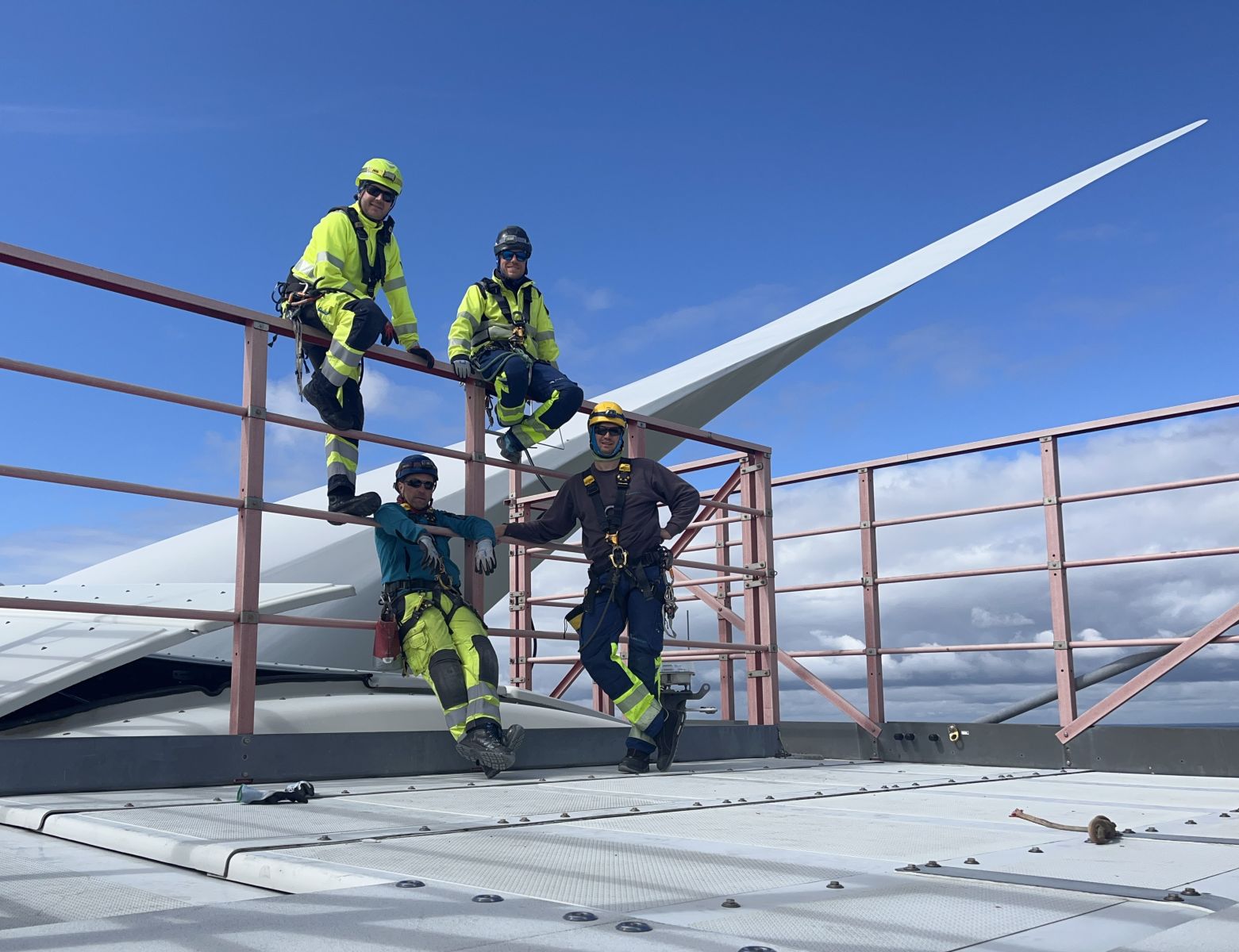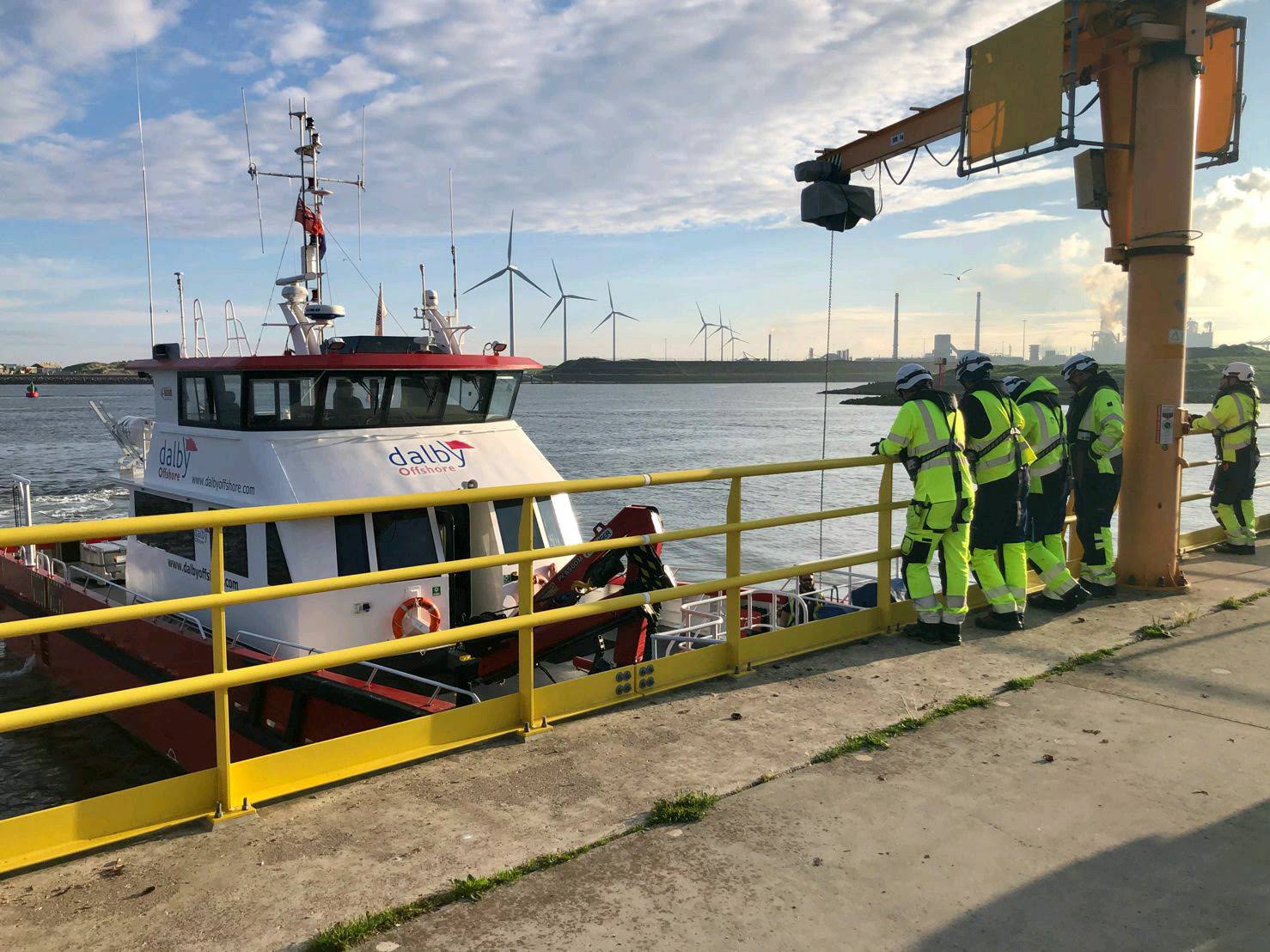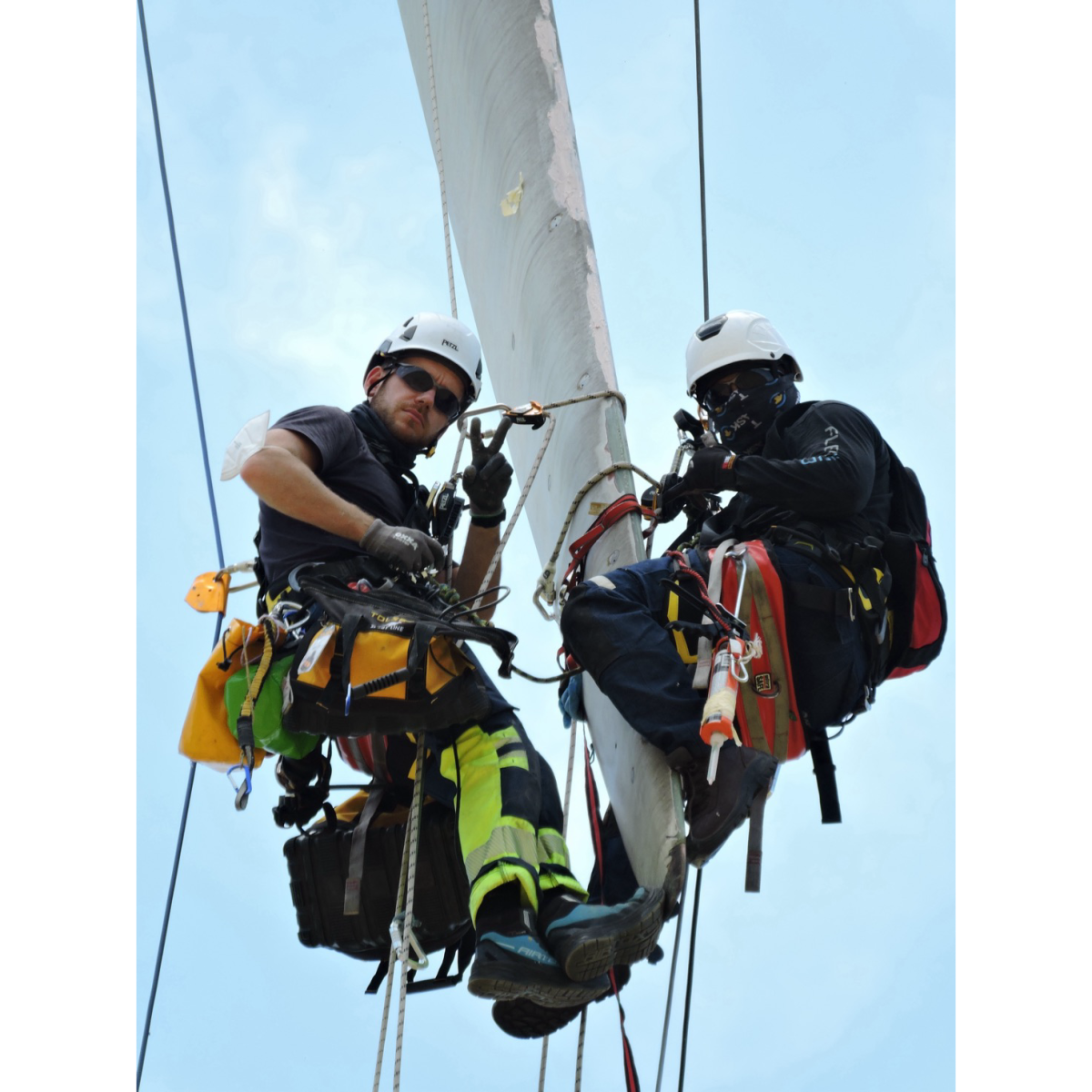The Talent Updraft: Recruitment, retention, and accountability as a blade technician
Picture this: You are sitting around a table, breaking bread with a group of wind technicians, when the conversation turns to how they all got into the business. To me, this is an especially relevant topic, as it might help with recruiting more talent into the business.
Here’s the interesting thing — most of the technicians got here because they knew someone already in the business. Take Zach, for example. His uncle recruited him. Len? Recruited by his brother. Tomas? Recruited by his friend Len.

Len expanded on why he stays in the wind industry. His brother actually had to work pretty hard to get him to try working on a blade repair crew. Once he started, though, he was hooked. He found the work challenging and rewarding. What he really loves, though, is being held accountable. His work and reputation matter to him. People count on him to do good work, without short-cuts. Developing a positive reputation and continuously expanding his skills drives him to stay in the industry, and to excel.
Frank has been in the business over 20 years, occasionally boomeranging in and out — as he says it “as the wind blows.” He keeps coming back as he loves the work, the travel, the teamwork, and loves teaching others the craft of blade repair.
One story was different from the others. Drew got out of the military and went to his local community college. He was deciding between learning the trade of diesel mechanic or wind technician, both of which were suggested by a counselor based on Drew’s skills and aptitude. He chose wind because he figured it would be more promising and represented an interesting future. He stays because it’s a fascinating, evolving, and important industry.
The conclusion I reached is that, for the time being, word of mouth is the industry’s most powerful recruiting tool. How can we leverage that power? With testimonials on social media? Stunning images? Since there don’t seem to be enough technicians for the available work, maybe that could help.

Unpacking some of the stories further, I wondered how Len and Tomas knew each other. As it turns out, they both worked in the composites industry (boats, to be specific). Industries like boat manufacturing, bicycle manufacturing, aerospace, and even prosthetics, all share similar technologies. More intriguing is that these industries represent transferable skills for blade repair. Can wind recruit from those industries?
Here is a real-world example. A well-known farm equipment manufacturer is laying off people in Illinois and Iowa due to a downturn in agriculture. Meanwhile, a group that makes nacelles plans to restart production in its manufacturing facility in central Iowa. Could this be an opportunity for the wind industry to gain manufacturing talent?
Back again to the dinner table with the technicians — the conversation turned to why people stay in the industry; that list was particularly telling. The number one reason is that people like the work. They take pride in the skills they have developed, some for over 20 years. They like the challenge. They like the travel. They like the teamwork. They like the money.

It’s also useful to understand what people don’t like. Not surprisingly, they don’t like the seasonality, and being laid off for extended periods of time. Some wonder if long-term exposure to the chemicals and fiberglass are safe, and if the PPE is enough. Those, however, seemed to be the only negatives.
I also wondered: How did people build their skills? Sure, some went to trade schools and community colleges, but the majority at the table learned through an apprenticeship program, mentors, and on-the-job training. This was appealing, as it didn’t require the upfront investment in time and money associated with a traditional college track. Gen Z is increasingly choosing the trades over college because it’s a straight path to a job, and they don’t want desk jobs. Plus, Gen Z doesn’t want to be burdened with student loan debt.
According to the American Wind Energy Association (AWEA), the wind industry has experienced rapid growth. Just 24 years ago, installed wind energy capacity in the United States was under 3,000 megawatts. Today, it is over 35,000 megawatts, enough to power almost 10 million homes. This growth is expected to continue. The U.S. Department of Energy states that it is feasible for wind power to provide 20 percent of U.S. electricity needs by 2030. That translates into needing more talent, especially as some of those 20+ year veterans consider retirement.
To summarize the findings from my dinner table conversation with almost two dozen technicians, the blade repair space is a good sector to enjoy interesting and rewarding work that pays a good wage. Most entered the business through referrals and stay because they like it. It also helped that they didn’t need a large initial investment of time and money.
Some ideas for adding talent, when and where we need it, include formalizing the referral process — recruiting from industries with transferable skills or industries suffering an economic downturn, and spreading the word that the wind industry is a growth industry with a bright future. You must hold yourself accountable, though, if you plan to stay.
Desiree Grace is General Manager at Flex Wind, North America, which offers experienced, skilled, and qualified technicians for wind projects. Flex Wind is continuously expanding the work area together with the inquiries and demands from new wind markets.
Flex Wind | www.flex-wind.com
Author: Desiree Grace
Volume: 2024 September/October









